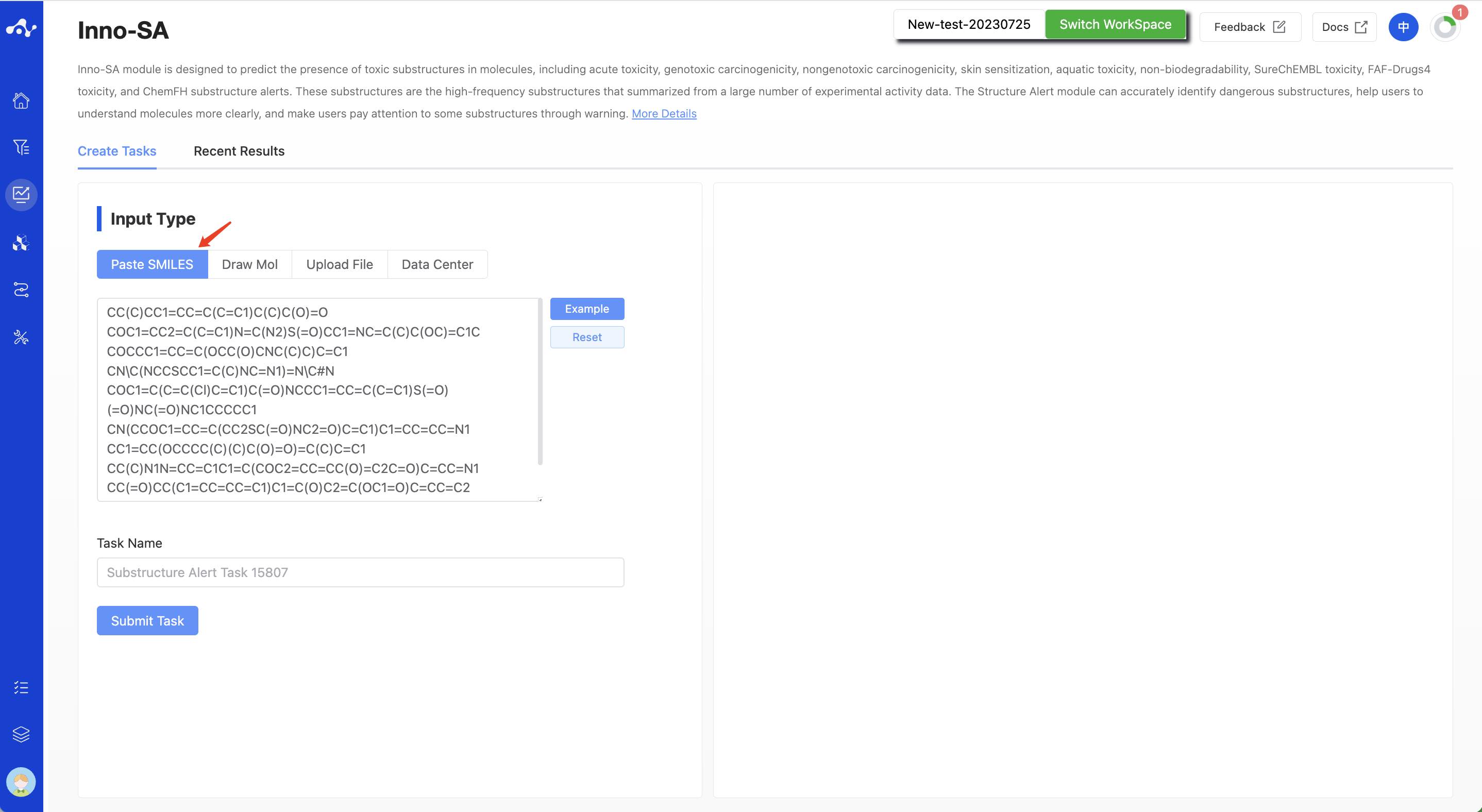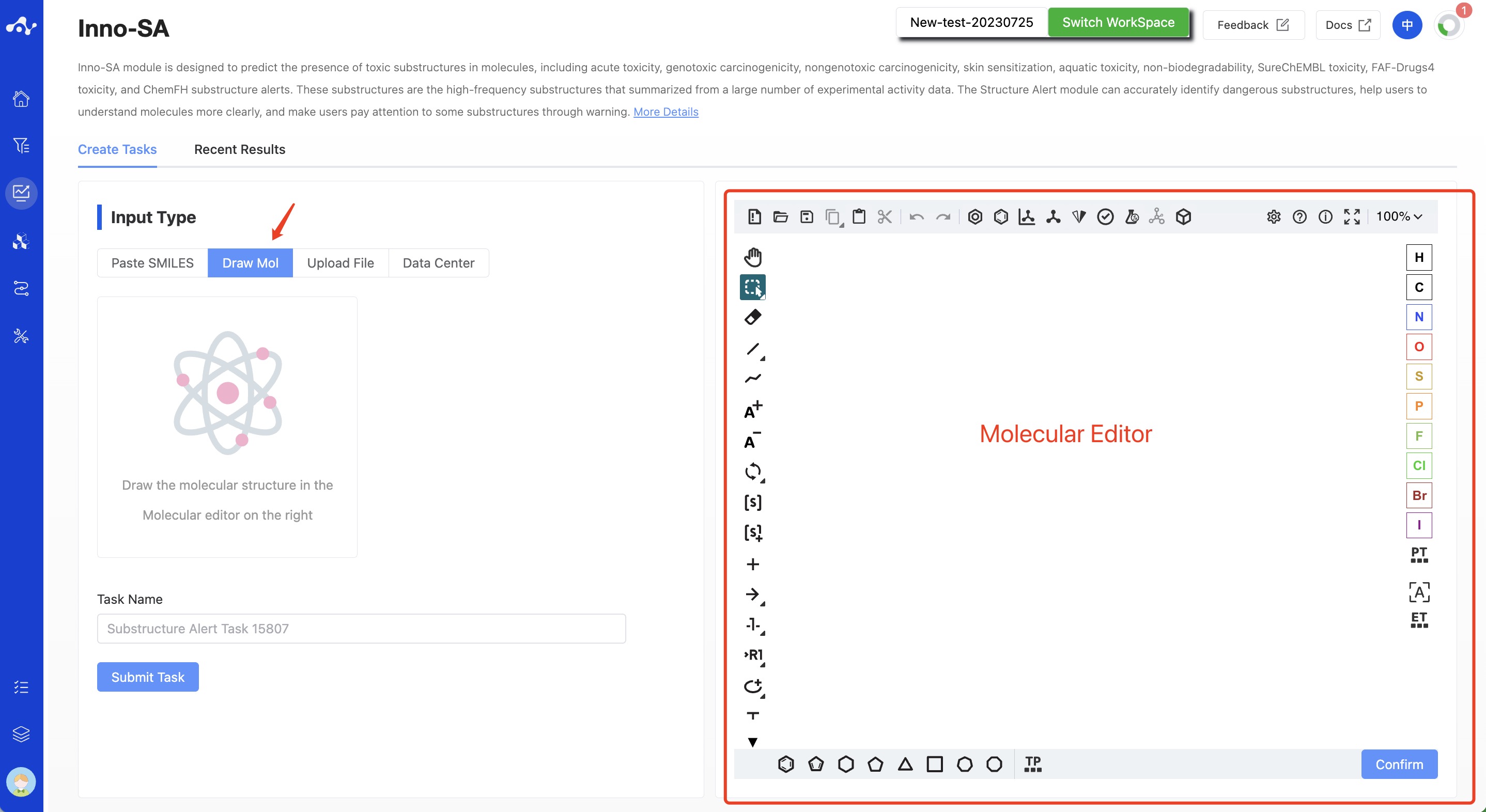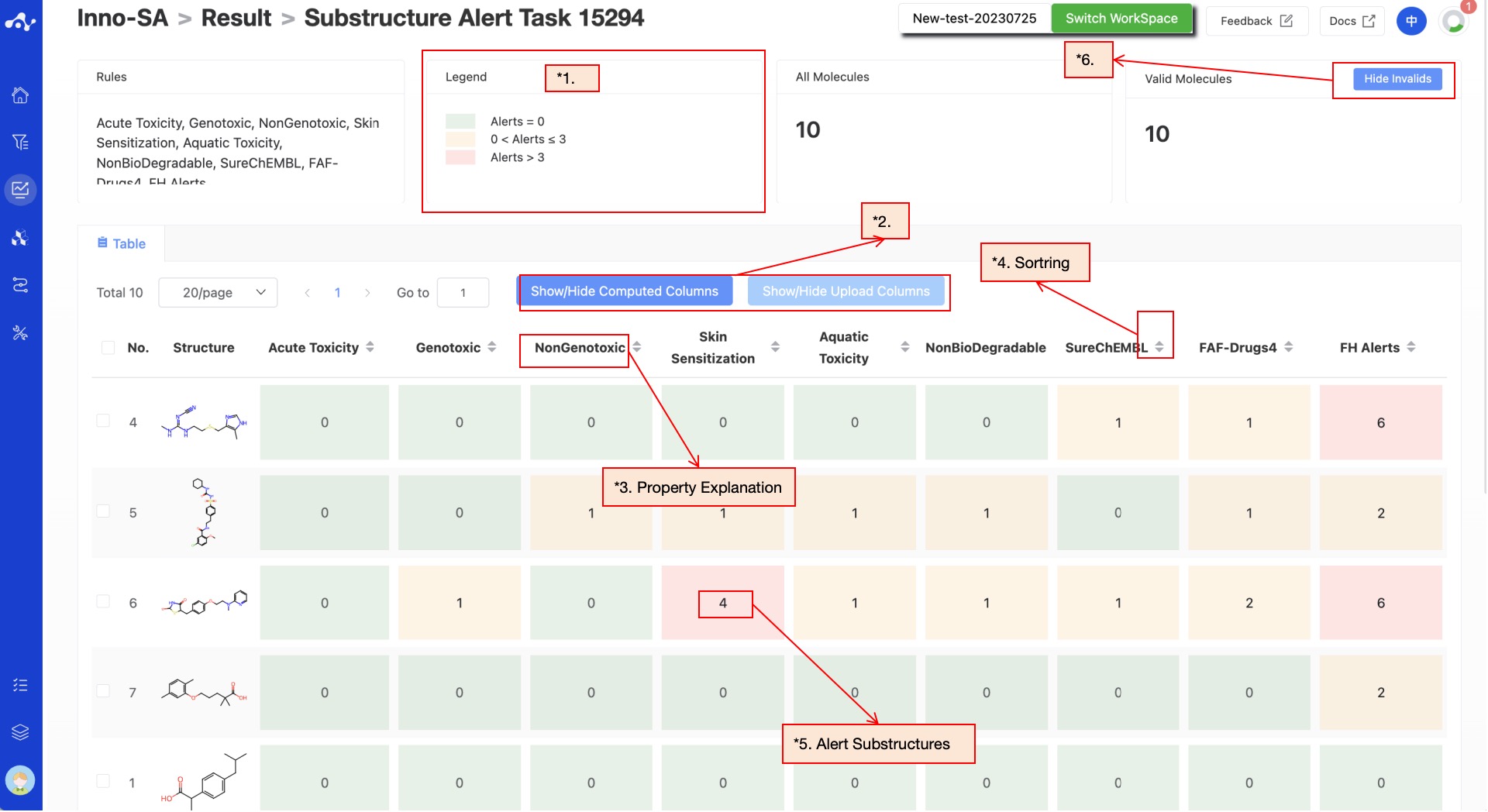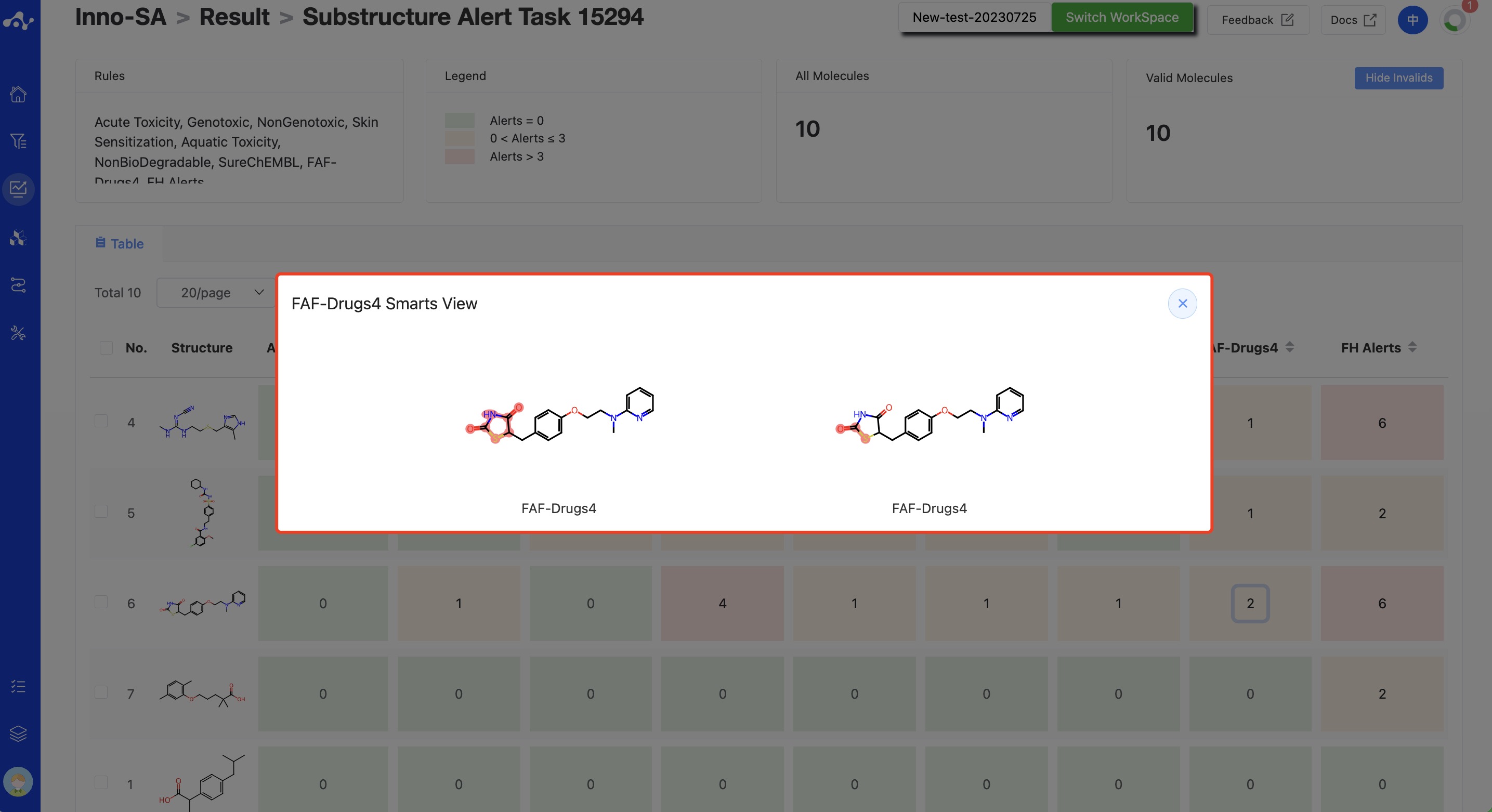Inno-SA
1. Overview of Structure Alert
The Structure Alert module is designed to predict the presence of toxic substructures in molecules, including acute toxicity, genotoxic carcinogenicity, nongenotoxic carcinogenicity, skin sensitization, aquatic toxicity, non-biodegradability, SureChEMBL toxicity, FAF-Drugs4 toxicity, and ChemFH substructure alerts. These substructures are the high-frequency substructures that summarized from a large number of experimental activity data. The Structure Alert module can accurately identify dangerous substructures, help users to understand molecules more clearly, and make users pay attention to some substructures through warning.
2. Introduction for Use
Users only need three steps to complete the calculation: determine the input method - task naming(Optional field) - submit task(Mandatory field).
(1) Input Type
The platform provides four data input methods: paste SMILES, draw molecule, upload file, and data center.
- Paste SMILES
Check the box that says "Input SMILES" and then, in the text box, enter one or more SMILES expressions (use line breaks to input multiple SMILES). This text box can contain up to 500 SMILES. If you want to input more than this, you can submit the task by uploading a file.

Figure 1. Input Type—— Paste SMILES
- Draw Molecule
Select "Drawing Molecules" in the check box and draw the molecular structure in the editor, and only one molecule can be drawn.

Figure 2. Input Type —— Draw Molecule
- Upload File
Check the "Upload File" box, and you can select a local file by clicking the button below. After the file is selected, the file name will be displayed on the button, and the file content will be displayed on the right. Regarding the uploaded files:
The currently supported file formats are .sdf and .csv. If an sdf file is uploaded, the task can be directly submitted. If a csv file is uploaded, you need to specify the smiles column before the task can be submitted.
The file size should not exceed 10MB.
- Data Center
Check the "Data Center" box, and a pop-up window will appear when you click the button below. Click on the file name to select data from the data center. After you click, the pop-up window will disappear and you can submit the task.

Figure 3. Input method——Upload File/Data Center
After all parameters are set, name the task and click 'Submit' to complete the task submission.
(2) Running Sataus and View Results
After the task is submitted, the page will automatically jump to the "Recent Results" subpage of the current page. Here you can view the task running status of the current module (progress bar), and you can also view all running tasks of all modules in the "Running" dropdown box in the upper right corner. When the data volume is large, the system will calculate in batches, so as long as a batch of data is calculated (while the entire task is still running), you can click the "Result Details" button to enter the result page and view the prediction result list of the currently completed calculations (molecules that have not completed the calculation will not be displayed temporarily). You can also refresh the current page to get the latest completed data.

Figure 4. View Results
3. Results Analysis
The results page consists of a Summary at the top, a Filter area on the left, and a Results Details area in the center. By default, the Results Details area displays the results list (you can also switch to card subpages), where you can see the number of substructure warnings for a molecule under a certain category.

Figure 5. Results Page Function Distribution
(1) Definition of Color
We have intuitively evaluated the prediction results through color, which helps users understand the evaluation results of the molecule more intuitively. The more green background, the fewer substructure warnings the molecule contains. The color setting rules are as follows:
If Alerts = 0, the background color of the value is green, indicating that the compound does not contain any substructure warnings;
If 0 < Alerts ≤ 3, the background color of the value is yellow, indicating that the compound contains substructure warnings and the number is ≤ 3;
If Alerts > 3, the background color of the value is red, indicating that the number of substructure warnings contained in the compound is > 3.
(2) Show/Hide Upload/Computed Column
The default result list does not display information in the uploaded file, so it is unselected in the left control bar. When you don't want to display this property, deselect it, and the result list on the left will show in real time based on the selection in the control bar. At the top, there are also two shortcuts "Select All" and "Deselect", which are convenient for users to quickly select.
(3) Attribute Interpretation
Hover your mouse over the name of each property to see the corresponding explanation.
(4) Sorting
Click the property name in the result list to re-sort, such as Acute Toxicity, click once to ascending order, click again to descending order, click again to restore the original sort.
(5) Alert Substructure
The size of the numbers on the page represents the number of warning substructures. By clicking on the numbers on the page, the page will display the warning substructures in a popup window.

Figure 6. Alert Substructure
(6) Hide Invalid Molecules
For SMILES errors or molecules that cannot be resolved in the back-end, the algorithm cannot perform the correct calculation, in which case the task is unaffected, but the molecule is defined as invalid. Users can use the "Hide invalid molecules" button to quickly filter out the part of the molecule.
